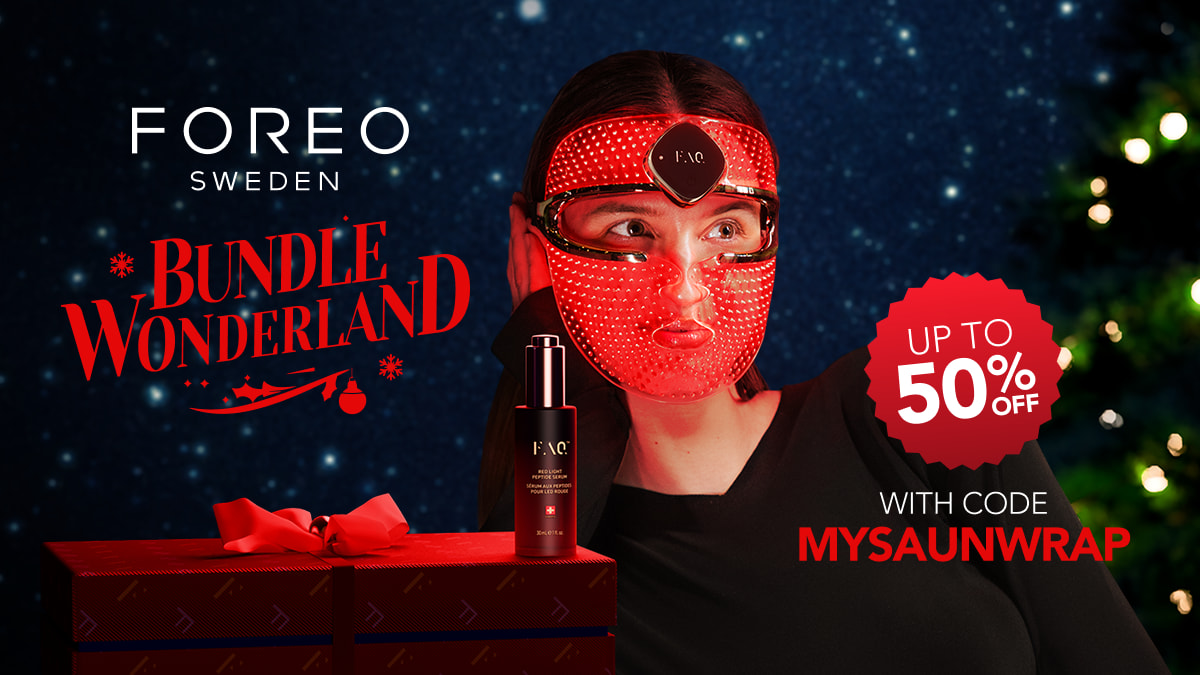12 min read
Best Hair Growth Products feat. Minoxidil

Ever dreamt of having hair so fabulous it deserves its own fan club, with people screaming from sheer joy and fainting at the sight of the voluminous, silky drama that is your hairdo? We exaggerate, but you get the point.
If hair loss has been creeping into your mane dreams, reclaiming bits of the scalp with hollow emptiness and pushing that once-assertive hairline into fading oblivion, you’re not alone! Stats show that at some point in their life, some starting as prematurely as in their early 20s, 85% of men and 33% of women will face hair loss. We’re very attached to our hair (ideally, it should be attached to us to a ripe old age). In most cases, people with hair loss or visible thinning will also experience personal and professional setbacks and psychological recoil from parting with the strands we value so dearly.
Hair care is more than just a routine—it's a journey to feeling your best, taken care of, healthy, viral, and attractive. Well-kept hair shows self-respect and respect for the occasions you choose to grace. Yet, the pesky problem of hair loss can throw a wrench in our plans. In this article, we're not just discussing any hair growth products; we're spotlighting the crème de la crème that features a highly effective and widely used Minoxidil, and we’re exploring the revolutionary FAQ™ 301 and its companion - FAQ™ Scalp Recovery & Thick Hair Probiotic Serum.
What is Minoxidil?
MInoxidil seems to have built up a following and is one of the most frequently used medications for hair loss. It is among the few FDA-approved remedies for hair loss that have been clinically shown to slow down hair loss in certain users. It's hardly a miracle medication, though. According to multiple clinical investigations, minoxidil only benefits 60–70% of users; this implies that up to 40% of users have no change in their hair loss.

Minoxidil is primarily used to treat hair loss and promote hair regrowth, and it is available as a topical solution, foam, or oral solution. Minoxidil originated in the 1950s when the Upjohn Company initially developed it to treat stomach ulcers. However, during clinical trials in the 1960s, researchers discovered its potent vasodilating properties, making it effective for treating severe hypertension. Interestingly, patients using Minoxidil for hypertension reported an unusual side effect: increased hair growth. This observation led to further research, and by the 1980s, Minoxidil was a possible treatment for androgenic alopecia (pattern hair loss). In 1988 the U.S. Food and Drug Administration (FDA) approved Minoxidil as the first drug to promote hair regrowth.
Minoxidil's mechanism of action involves vasodilation, which means it widens the blood vessels, increasing blood flow to the scalp and providing more oxygen and nutrients to the hair follicles. Additionally, Minoxidil shortens the telogen (resting) phase of the hair cycle and prolongs the anagen (growth) phase, leading to thicker and healthier hair growth.
When it comes to treating hair loss, several popular brands utilize Minoxidil. Rogaine is one of the most recognizable names, often recommended for its effectiveness in both men and women. Equate, a more budget-friendly option, offers formulations similar to Rogaine, making it accessible to those looking for cost-effective solutions. Lipogaine combines Minoxidil with other ingredients to enhance scalp health and hair growth. Brands like Vegamour and Nutrafol have gained attention, with Nutrafol reviews often highlighting its comprehensive approach to hair wellness. Each of these brands provides different formulations, catering to various needs and preferences in the fight against hair loss.
Benefits of Using Minoxidil
Minoxidil offers several benefits and advantages, most notably proven efficacy supported by numerous clinical studies and user testimonials. Clinical trials have demonstrated that Minoxidil can stimulate hair growth and reduce hair loss in a substantial percentage of users. A study published in the Journal of the American Academy of Dermatology found that 60% of men using Minoxidil experienced hair regrowth.
Minoxidil is a versatile solution suitable for various types of hair loss, including male and female pattern baldness, alopecia areata, and traction alopecia. It treats male pattern baldness (receding hairline and crown thinning) and female pattern hair loss (diffuse thinning on the scalp). Minoxidil's most frequently used forms are available over-the-counter in topical solutions and foams, which are easy to apply and seamlessly blend into daily routines. For those needing medical supervision, prescription-strength formulations are also accessible. This broad applicability and convenience make Minoxidil a viable option for those with different hair loss conditions.

Minoxidil side effects
Despite a large percentage of people responding well to the treatment, Minoxidil has also come under harsh criticism because of the numerous potential side effects. Man-made drugs do tend to come with an unwanted basket of side effects, don’t they? We seem to bump into a side effect for each benefit with pharmaceuticals, and we should at least know all the possible ways this could play out to give informed consent to using the drug.
Minoxidil can make hair brittle or dry or change its texture. It also presents several more serious risks, including dizziness, fainting, swelling, unusual weight gain, irregular heartbeat, chest pain, palpitations, and difficulty breathing in some cases. The idea that a topical medication could have adverse effects elsewhere on the body may seem odd. Still, it makes sense when you consider that topical Minoxidil can be absorbed through the skin and enter the bloodstream. The body is a closed loop where all parts talk to one another. The side effects of Minoxidil in females also include increased hair growth on the face or other parts of the body if one is not very careful during application. A little menopause preview, so please make sure only to use Minoxidil-containing products where you wish to see regrowth.
FAQ™ 301
There are other ways to go for those to whom these side effects are not an attractive prospect, those who are not happy with the traditional methods, or those who wish to intensify the impact of topicals with complementary treatments. The FAQ™ 301 offers a natural solution that uses LED light to jumpstart the cells in hair follicles and make them stronger, more robust, and more productive. It is a premium line of hair care devices developed by a prominent FAQ™ brand known for its commitment to innovative and effective solutions. The FAQ™ 301 addresses hair growth and scalp health, making it an ideal choice for individuals experiencing hair thinning or hair loss. Combining advanced scientific research with a unique and original approach, FAQ™ created elegant, hand-held, and easy-to-use, zero side effects or discomfort, premium devices that promote hair growth and ensure the overall health of the scalp.
FAQ™ 301 focuses on creating a nourishing environment for hair to thrive. It focuses on strengthening thinning, lifeless, dull hair strands by stimulating the scalp and revitalizing follicles with red LED light and T-Sonic™ massage. Regular scalp massages can significantly enhance the effectiveness of all hair growth treatments because they significantly increase scalp blood circulation and absorption of liquid hair growth treatments like Minoxidil, ensuring they penetrate deep into the hair follicles.
The FAQ™ Scalp Recovery & Thick Hair Probiotic Serum is a highly recommended option for those seeking effective hair-thickening products. It is a lightweight, skincare-inspired hair growth serum formulated with probiotics, Red Clover Extract, and Centella Asiatica to nourish the scalp, combat flakiness and oiliness, and strengthen hair strands.
How to get the best out of FAQ™ 301
Incorporating these products into your daily routine is quite simple and quick. Just follow these steps:
1. Apply a few drops of FAQ™ Scalp Recovery & Thick Hair Probiotic Serum onto your scalp, focusing on the thinning areas.
2. Press the universal power button on your device to turn it on. To adjust the T-Sonic™ massage intensity, quickly press the button again until you find a level that suits you. For guided treatments and more settings, use the FAQ™ Swiss app.
3. Press the device firmly on your scalp and slowly glide it in tight circular motions over one area until the timer pulses. Repeat this process on the next area of your scalp as needed.
4. Press and hold the universal power button for 3 seconds to turn off the device.
Recommended Use: Use every other day, treating each area for 2 minutes.
Important Note: Move the device very slowly to ensure your scalp receives the full benefit of the LED light. Moving too quickly may reduce the effectiveness of the treatment and hinder optimal hair growth as the technology didn’t have sufficient time to act on the follicles.
Consistency is the key here, as natural treatments can’t work faster than the natural hair growth phases. Be vigilant and dedicated, and you’ll see noticeable improvements in hair density and overall scalp health.

FAQ™ 302 Laser & red LED hair regrow scalp massager
Over 160 million people globally will experience alopecia at some point in their lifetime, with first signs showing up as early as in their twenties and, in 80% of people, evident before age 40.
There is a world of difference between mild hair thinning and grand-scale hair loss that leaves us feeling ashamed, less than, and self-conscious while alopecia ravages our scalp. There is also a difference in approach for slight thinning to needing to regrow larger sections, and the difference is - laser. A Swiss biotech innovator, FAQ™ is a new cutting-edge brand that pushes the science of professional rejuvenation and hair regrowth, locking powerful technologies into elegant, easy-to-use, hand-held devices. Based on science and research, they offer no clinics, no cables, and no compromises for those who demand efficacy from their long-term selfcare investments.
FAQ™ Swiss created two luxury devices, each catering to a different hair thinning and hair loss level. The initial FAQ™ 301 was designed for people who are dealing with mild to moderate signs of hair loss and thinning. His more exclusive sister, FAQ™ 302, is the most powerful hair regrowth at-home solution, combining red LED and T-Sonic™ massage with powerful lasers. Technology fusion delivers a targeted treatment that helps regrow your hairline, temples & crown by reactivating dormant hair follicles with natural cellular energy, coaxing them into optimal performance.

You're not introducing anything harmful, and there are no side effects from the laser and LED light, as you're just restoring natural processes in the follicle with perfectly calibrated, optimized wavelengths and LLLT (low-level laser therapy). FAQ™ 302 will increase hair density and length and decrease fallout as T-Sonic™ massage helps dislodge buildup on the scalp, allowing hair oils and serums to penetrate deep into the follicle - where they can actually work. The massage also stimulates blood flow, delivering oxygen and essential nutrients to starving hair follicles.
The device best suited for you will depend on your needs and the stage of your hair loss or hair thinning. LED alone will give some solid results, but laser energy is coherent rather than dispersed, as with red light therapy. Laser energy is superior for severe hair loss because it forms a narrow and concentrated beam of light, penetrating directly into the core of each hair follicle to treat it individually, while red LED alone will stimulate a larger area. FAQ™ 302 decided to test what would happen if we used diffuse and concentrated energy at the same time and realized that the interactions yielded better outcomes.
Clinical trials conducted by a 3rd party over 112 days confirmed that regular use of FAQ™ 302:
- Increases hair growth & density by up to 47%
- Increases hair glossiness by 46% in just 1 month
- Reduces hair loss by up to 46%
- Results in up to 109 additional new hairs/square inch in just 4 months
For even better results, and if you feel like your scalp is imbalanced and frail, we'd warmly recommend using FAQ™ 302 with FAQ™ Scalp Recovery & Thick Hair Probiotic Serum, developed explicitly for synergistic effects with the laser hair regrowth device. This lightweight skincare-inspired scalp serum is formulated with microbiome-balancing Probiotics to combat flakiness or an oily scalp, hair-strengthening Red Clover Extract for added volume, and follicle-repairing Centella Asiatica to revitalize the hair.
Complementary Hair Growth Practices
Finding a way to maximize the effectiveness of FAQ™ devices, Scalp Recovery & Thick Hair Probiotic Serum, and other hair growth products, such as the mentioned Minoxidil-containing products, can be highly beneficial. Complementary hair growth practices that concern a lifestyle supporting your overall health and circulation also add a compound effect. While undergoing any hair recovery treatment, pay attention to proper nutrition, stress management, and regular scalp massages, which can all enhance hair health and promote regrowth. It would also be a good idea to opt for a soft detangler rather than a more rigid hairbrush to prevent further damage. There are some new detanglers that will boost your brushing with a daily LED therapy session, such as FLIP™ play Advanced LED Light Hairbrush.
Proper nutrition plays a crucial role in maintaining healthy hair. A diet rich in vitamins, minerals, and antioxidants such as biotin, vitamin E, zinc, and iron supports hair growth and strengthens hair follicles. Foods like eggs, nuts, leafy greens, and fish are excellent sources of these nutrients. Ensuring adequate protein intake as new building blocks is also essential, as hair is primarily made of a type of protein, keratin.
Using hair growth oil and essential oils, such as peppermint or lavender oil, during scalp massages can further enhance their benefits.
Stress management is another really important factor in promoting hair health. Chronic stress in general, depletes the body and is s sure way to not only aesthetic issues but serious stress-related conditions such as ulcers, cardio-vascular problems, inflammation, and GI upsets, which all set the stage for more serious diseases.
Chronic stress can lead to hair loss by disrupting the hair growth cycle and pushing hair follicles into a resting phase. This is logical because the body is very smart and conservative. It does not waste. If you’re in constant fight or flight, it makes no sense to waste energy on something so marginal as nurturing a full head of lush hair when the energy could be used to prepare you for battle conditions your stress levels are signaling. Stress similarly affects all bodily functions that are considered non-essential, like heating the periphery (hands and feet), fertility, or creativity.
Techniques such as meditation, yoga, exercise, and mindfulness can help reduce stress levels and create a more favorable environment for full body recovery, including hair growth. Incorporating these practices into your daily routine can improve overall well-being and support health.

While Minoxidil has proven benefits for hair growth, including increased hair density and reduced hair loss, it also comes with potential disadvantages such as dizziness, fainting, swelling, unusual weight gain, irregular heartbeat, and others. Balancing these pros and cons is crucial for anyone considering Minoxidil as a hair growth solution. Over or under the counter, don’t accept any drug into your system before familiarizing yourself with the possible side effects.
The FAQ™ 301's intense red LED light, FAQ™ 302 (review here), and FAQ™ Scalp Recovery & Thick Hair Probiotic Serum offer innovative alternatives as unique approaches in a technological sense but also as the best hair growth serum formulated with microbiome-balancing probiotics. These products promote scalp health and hair thickness and integrate seamlessly into a holistic hair care routine. Their effectiveness in enhancing hair growth and overall scalp condition makes them worthy of consideration.
Stay mindful of the goal, but have realistic expectations of how fast the results will show, as we’re not doing anything invasive here, just helping your body restart—whether it's regrowing hair or preventing further hair loss.
Occasionally, life gets hairy, but sometimes that’s a good thing. May you be merry and very hairy (in the right places). Don't forget to subscribe to our blog for more hair care tips and product reviews, and we’ll do our best to give you valuable and verified information on all things beauty, health, and well-being.
Up to 50% off FOREO Gift Sets: code MYSAUNWRAP
Bundle Wonderland from Dec 3 - Dec 31
It is the most wonderful time of the year when we jingle and mingle, and the gifting fever is the only thing louder than bells and buzzed uncles at family gatherings. Ho-ho-holiday home spa beauty gifts just got all bundled up into FOREO gift sets in The Bundle Wanderland. From Dec 3 - Dec 31, the holiday train choo-chooes by with an extra 35% off FOREO favorite devices and up to half off exclusive skincare with the code MYSAUNWRAP.

The impressive big-saver holiday skincare gift sets will delight your bulimic wallet and make you instantly glow with holiday cheer. Stay cool, curious, and cozy as you wander through Bundle Wonderland, and enjoy living in your skin.








Comments
1 comments
Leave a comment